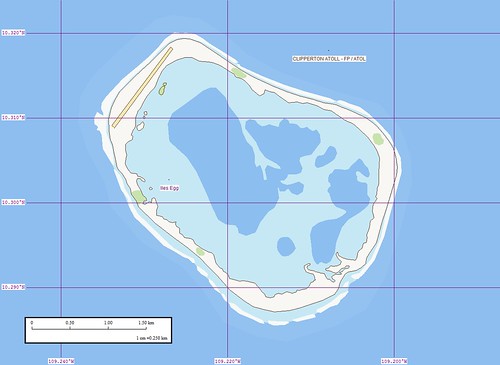Tatakoto Atoll FP
Wednesday, December 27, 2006
Tatakoto Atoll FP
Tatakoto (17˚20'S., 138˚25'W.) is a low atoll about 90 miles NW of Pukaruha that is wooded on the NW part. The lagoon is inaccessible from the sea, but a landing may be made near a flagstaff in a village on the atoll's W side. (SD Pub-126)
TATAKOTO
THE TUAMOTU ARCHIPELAGO
Other names given by European discoverers: Augier, Narcisse
Tatakoto is located 1,182 kilometers (724 miles) from the island of Tahiti and some 180 kilometers (119 miles) from the nearest inhabited atolls of Vahitahi and Puka Puka; Tatakoto is undoubtedly one of the most remote atolls in the Tuamotu Archipelago as well as all of French Polynesia.
Geography
This bean-shaped atoll is 14 kilometers (8.7 miles) long and 3.5 kilometers (2.2 miles) wide. It is located at 17°20’ south latitude and 138°24’ west longitude.
Tatakoto covers an area of 730 hectares (1,804 acres) divided up into 65 islets, or motu. Its lagoon, which covers an area of 1,970 hectares (4,868 acres), is 11 kilometers (6.8 miles) long and 2.5 kilometers (1.6 miles) wide. The biggest motu is 15 kilometers (9.3 miles) long and 400 meters (1,312 ft.) wide, covering the entire north coast of the atoll in an east-west direction. The southern side of the atoll is exposed to prevailing winds and is composed of a series of motu separated by small passes. The biggest motu has an unpaved runway that is practical for flying out copra. The village of Tumukuru is concentrated on both sides of the main road and along the coconut plantation road, an overall area measuring 600 meters (1,969 ft.) long by 200 meters (656 ft.) wide. Six main streets crisscross the village of Tumukuru, which is located on the western point of the atoll. Tatakoto has an aerodrome located near the village, but the atoll does not have a pass through the coral reef enclosing the lagoon. The village has a whaleboat dock and a 25-meter (82-ft.) pier. A second whaleboat dock is located in the southern part of the atoll.
History
Two Spanish explorers—Domingo de Boenechea and Andiay Varela—sighted Tatakoto independently of each other on the same day in 1774, becoming the atoll’s first European discoverers. From 1900 to 1927 Frenchman Albert Javelot served as the atoll’s chief, planting the atoll with coconut trees that still cover the atoll today. The 1996 census recorded a population of 247 persons.
(From Presidency of French Polynesia Web Site)
Atolls are both satisfying and frustrating to map. They take hours to complete. This atoll consists of 13 identified layers and another 4 additional layers. Each layer of information requires consistent identification and delineation. Each atoll's EVS Reef Middle, for example, should be consistently identified from the Landsat mosaics used as base imagery no matter the island. The steps to create a map such as this are both tedious and demanding. Now for the good stuff - the finished map looks great! It not only looks great, it is a solid cartographic effort. Even before I began this project, I knew that ultimately the finished product would look great. The base imagery is clean and provides a crisp picture of the atoll. The challenge was to keep working. And that is just what I did.
Enjoy!
Labels: atoll, EVS, Global Mapper, island, Landsat, map, Marplot, Pacific, Polynesia, Tuamotus
posted by Mr Minton at 11:26 AM
1 comments
![]()



































